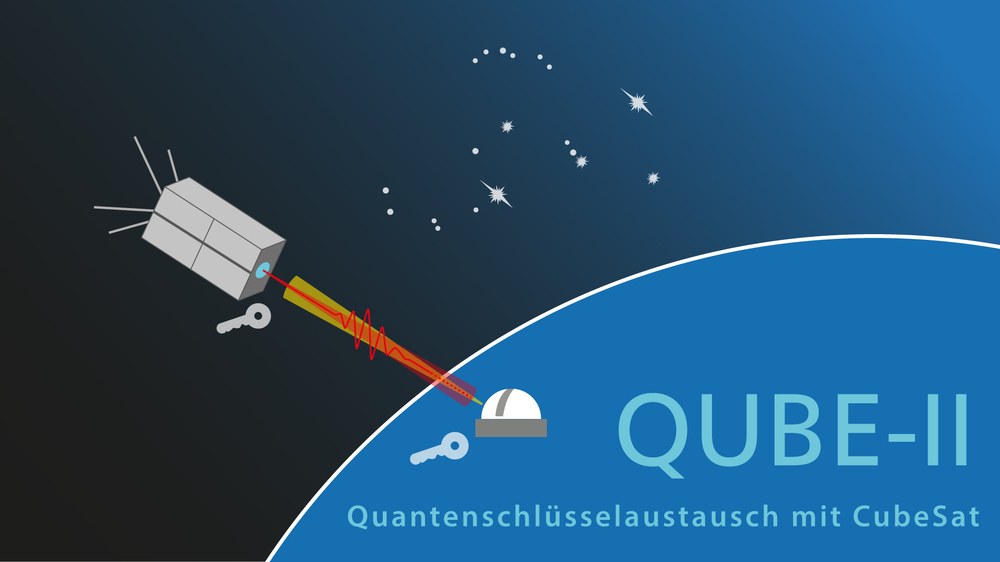QUBE-II - Quantum Key Distribution with CubeSat
The emerging second quantum revolution brings new innovative services to our society based on new quantum technologies. One of the most important of these is quantum key distribution, one of the most advanced quantum technologies. The first commercial products are available from various companies and more are in the starting blocks.
In the predecessor project QUBE, novel quantum key generation technologies were already integrated into the Cube-Sat platform and combined with powerful, optical communication systems. Within the framework of QUBE, the miniaturised quantum communication components are being tested in space under the most adverse conditions for their functionality and possible use in actual QKD applications.
In order to be able to generate a quantum key using the novel technologies developed in QUBE, these components will be further developed in QUBE-II and integrated together with new components. When generating a quantum key, the channel loss between satellite and ground station is of great importance, among other things. This is to be reduced in QUBE-II by increasing the output aperture of the telescope used for the transmission of the quantum signals. In addition, an optical link between the ground station and the microsatellite (uplink) will be established for the first time. This is necessary because a bidirectional, classic optical communication link with a high data rate is required within the framework of the QKD protocols, which define the exact sequence of quantum key generation. For this purpose, the OSIRIS4CubeSat terminal developed by DLR will be extended by a data receiver, among other things.
The platform for the QUBE-II satellite continues to be the Cube-Sat structure already used in QUBE, which enables a cost-effective, standardised and modular design. Due to the enlarged aperture and the extended functionalities of the QUBE-II satellite, the size of the satellite will increase from 3U to 6U.
Participants in the scientific project
- OHB System AG, Weßling - Oberpfaffenhofen (Coordinator of the network)
- Zentrum für Telematik e.V., Würzburg
- Ludwig-Maximilians-Universität München
- Friedrich-Alexander-Universität Erlangen-Nürnberg
- Deutsches Zentrum für Luft- und Raumfahrt DLR
Project duration: 01/2022 - 12/2025
Funded by: Federal Ministry of Education and Research (BMBF)

BMBF

